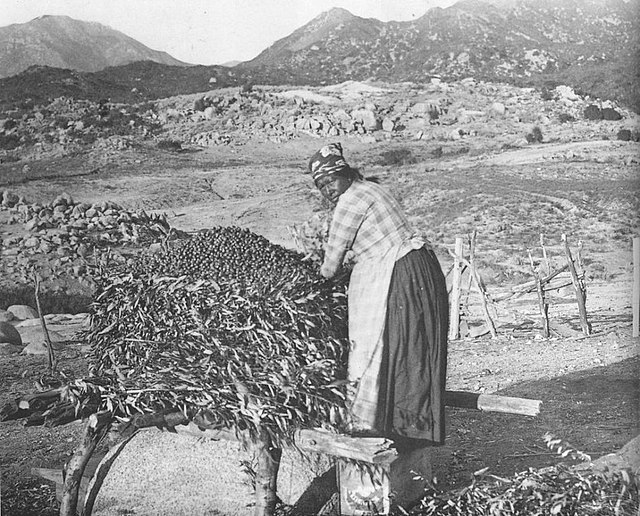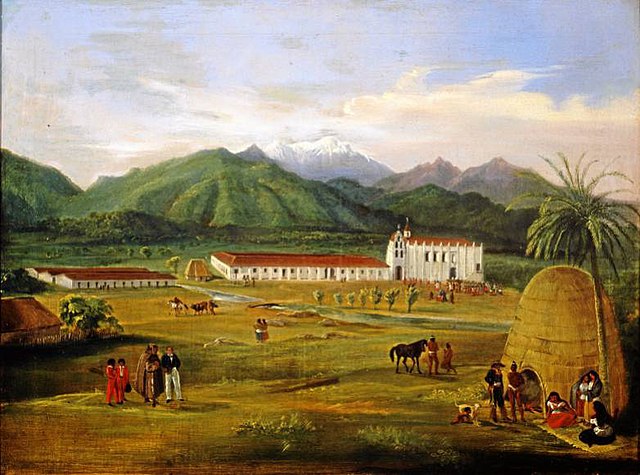The Tongva language is an extinct Uto-Aztecan language formerly spoken by the Tongva, a Native American people who have lived in and around modern day Los Angeles for centuries. It has not been a language of everyday conversation since the 1940s. The Gabrielino people now speak English but a few are attempting to revive their language by using it in everyday conversation and ceremonial contexts. Presently, Gabrielino is also being used in language revitalization classes and in some public discussion regarding religious and environmental issues. Tongva is closely related to Serrano. The names of several cities and neighborhoods in Southern California are of Tongva origin, and include Pacoima, Tujunga, Topanga, Azusa, Cahuenga in Cahuenga Pass and Cucamonga in Rancho Cucamonga.

Mrs. James Rosemeyre (née Narcisa Higuera), photographed here in 1905, was one of the last fluent Tongva speakers. An informant for the ethnographer C. Hart Merriam, she was the source of the widely used endonym Tongva.
The Tongva are an Indigenous people of California from the Los Angeles Basin and the Southern Channel Islands, an area covering approximately 4,000 square miles (10,000 km2). In the precolonial era, the people lived in as many as 100 villages and primarily identified by their village rather than by a pan-tribal name. During colonization, the Spanish referred to these people as Gabrieleño and Fernandeño, names derived from the Spanish missions built on their land: Mission San Gabriel Arcángel and Mission San Fernando Rey de España. Tongva is the most widely circulated endonym among the people, used by Narcisa Higuera in 1905 to refer to inhabitants in the vicinity of Mission San Gabriel. Some people who identify as direct lineal descendants of the people advocate the use of their ancestral name Kizh as an endonym.

Narcisa Higuera, photographed in 1905, was one of the last fluent Tongva speakers. An informant for ethnographer C. Hart Merriam, she was cited as the source of the widely used endonym Tongva.
A bench with the name Tongva on it.
Photograph of a Mission Indian (Gabrieleño) woman filling a granary with acorns, c.1898
Painting of Mission San Gabriel by Ferdinand Deppe (1832) showing a Gabrieleño kiiy thatched with tule.




